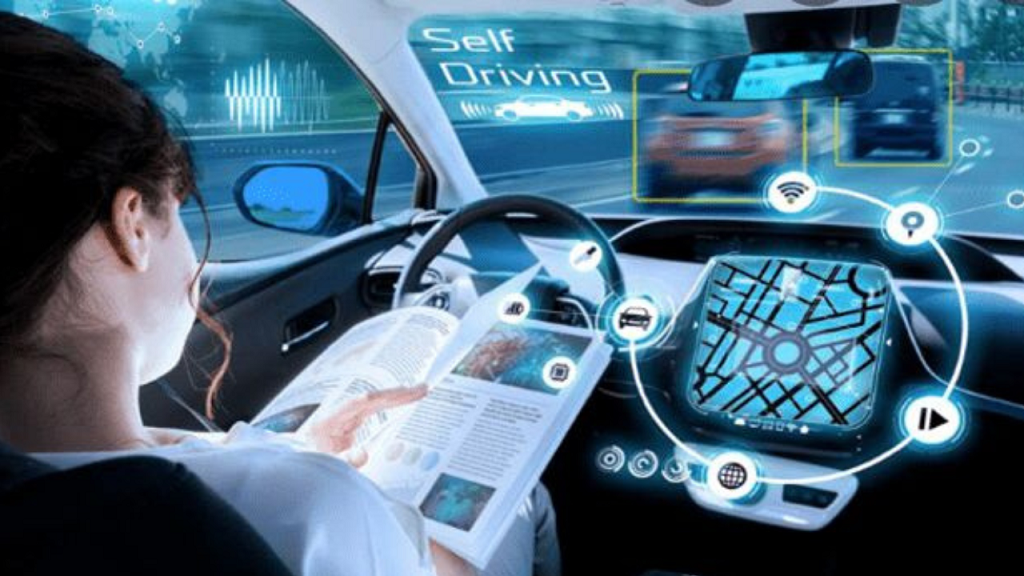Imagine a world where commutes become stress-free, traffic accidents plummet, and the very act of driving transforms from a chore into a leisure activity. The development of self-driving cars is actively pursuing this futuristic vision, and at the heart of this revolution lies artificial intelligence (AI).
This article delves into the fascinating world of AI in self-driving cars, exploring how machines are being trained to navigate the complexities of our roads. We’ll explore the core functionalities powered by AI, delve into the different algorithms used, and discuss the exciting possibilities and challenges that lie ahead.
Understanding the Self-Driving Challenge
For a car to navigate autonomously, it must perceive its surroundings, make real-time decisions, and control the vehicle accordingly. This seemingly simple task presents a multitude of challenges:
- Understanding the Environment: Self-driving cars rely on a suite of sensors, including cameras, radar, and LiDAR (Light Detection and Ranging), to create a 360-degree perception of their surroundings. AI algorithms then process this sensory data to identify and classify objects like vehicles, pedestrians, traffic signals, and lane markings.
- Decision-Making in a Dynamic World: Traffic scenarios are constantly evolving. AI needs to interpret the actions of other drivers, pedestrians, and cyclists, anticipate potential dangers, and make split-second decisions to ensure safe navigation.
- Planning and Maneuvering: Once the environment is understood and decisions are made, the AI must translate those choices into real-world actions. This involves controlling steering, acceleration, and braking with smooth and precise maneuvers.
The Role of AI in Self-Driving Cars
AI acts as the brain behind the wheel in self-driving cars. Here’s a breakdown of its core functionalities:
- Perception: AI algorithms analyze the data collected by the car’s sensors, creating a real-time picture of the surrounding environment. Techniques like object detection and classification allow the AI to identify and track vehicles, pedestrians, traffic lights, and other crucial elements.
- Localization and Mapping: AI helps self-driving cars understand their position within the environment. By referencing high-definition maps and GPS data, the AI can pinpoint the car’s location and plan its route accordingly.
- Decision-Making: This is where the real magic happens. AI algorithms analyze the perceived environment and consider factors like traffic rules, weather conditions, and potential obstacles. Based on this analysis, the AI makes decisions about acceleration, braking, lane changes, and other maneuvers to navigate safely and efficiently.
- Planning and Control: The AI translates its decisions into real-world actions. It controls the steering wheel, adjusts acceleration and braking, and ensures the car maneuvers smoothly and safely.
Types of AI Algorithms Used
Self-driving cars rely on a combination of AI algorithms to achieve their remarkable feats. Here are some of the key players:
- Machine Learning: This allows AI systems to learn and improve without explicit programming. By analyzing massive datasets of real-world driving scenarios, machine learning algorithms can identify patterns and make increasingly accurate predictions about the behavior of other drivers, pedestrians, and the environment.
- Deep Learning: A subfield of machine learning, deep learning utilizes artificial neural networks, loosely inspired by the human brain. These complex networks can process large volumes of sensor data and identify complex patterns, enabling self-driving cars to excel at object recognition and scene understanding tasks.
- Computer Vision: This field of AI focuses on analyzing visual data like images and videos. In self-driving cars, computer vision algorithms are used to interpret the data from cameras, allowing the AI to “see” the road and its surroundings.

The Road Ahead: Challenges and Opportunities
While AI has made significant strides in self-driving technology, there are still hurdles to overcome:
- Ethical Considerations: Self-driving cars face complex ethical dilemmas in unavoidable accident scenarios. AI algorithms must be programmed to make ethical decisions that prioritize safety for all road users.
- Weather and Unforeseen Situations: Self-driving cars need to learn to adapt to diverse weather conditions and unexpected situations on the road. While AI is constantly improving, handling the unknown remains a significant challenge.
- Regulatory Landscape: Governments around the world are still grappling with the legal and regulatory frameworks surrounding self-driving cars. Clear guidelines are needed to ensure safety and public trust. Despite these challenges, the potential benefits of self-driving cars are undeniable. Imagine a future with:
- Reduced Traffic Accidents: Human error is a significant factor in most car accidents. Self-driving cars, with their precise and tireless perception systems, could drastically reduce traffic fatalities.
- Increased Accessibility: For people with disabilities or those who cannot drive due to age, self-driving cars offer the potential for greater independence and mobility.
- Optimized Traffic Flow: Self-driving cars that communicate with each other could create a more efficient traffic flow, reducing congestion and travel times.
- Improved Productivity: Time spent commuting could be transformed into productive work hours if passengers can utilize their travel time in self-driving cars.
Related: What is the Basic of Automotive Technology
The Future is in Motion
The development of self-driving cars powered by AI is an ongoing process filled with both challenges and immense potential. As AI technology continues to evolve and regulations adapt, self-driving cars have the potential to revolutionize transportation, making our roads safer, our commutes more efficient, and our world a little bit smarter.





